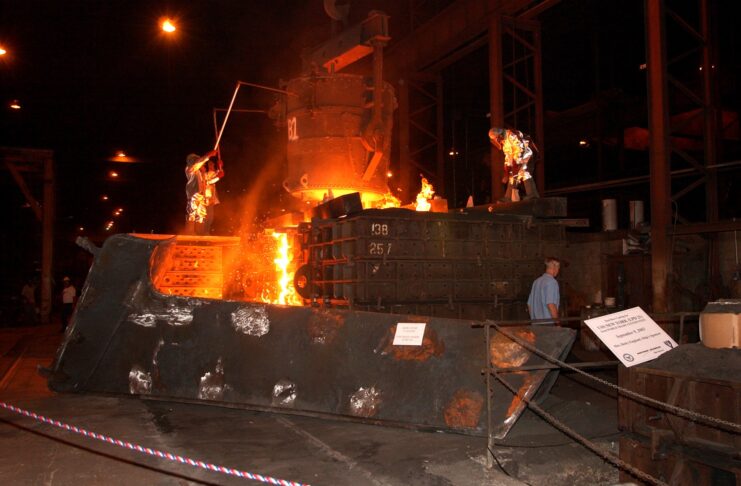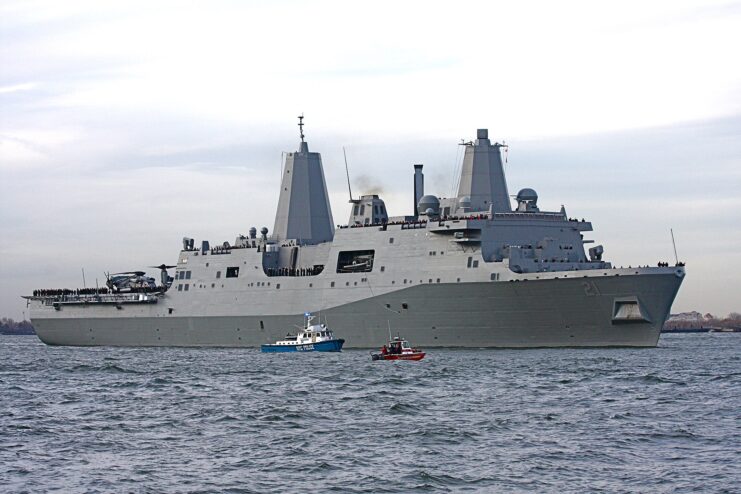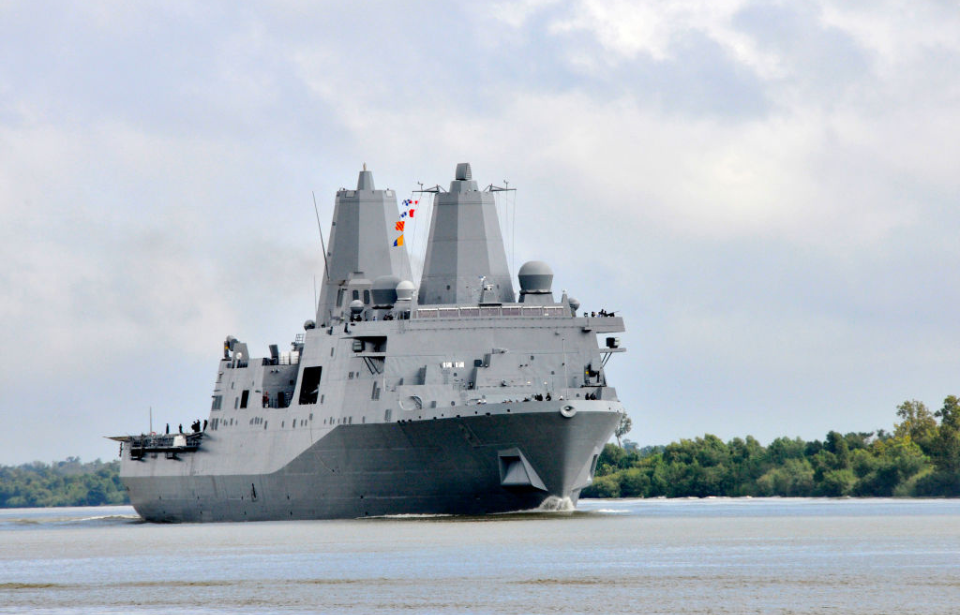The USS New York (LPD-21) is a San Antonio-class amphibious transport dock operated by the US Navy. The fifth vessel in her class, she’s served in various theaters and was the ship used to transport the alleged mastermind of the 2012 Benghazi attack to the United States. While interesting, what makes New York among the most unique ships operated by the US is that steel from the World Trade Center was used in her construction.
Naming the USS New York (LPD-21)

Following the 9/11 attacks, New York Gov. George E. Pataki wrote a letter to then-Secretary of the Navy Gordon R. England. In it, he asked that a surface ship involved in the Global War on Terrorism be named for the state, to honor those who’d lost their lives. This was an unexpected request, as state names are typically reserved for submarines.
On August 28, 2002, Gordon approved the request.
The USS New York wasn’t the only vessel that was named to honor the victims. Two other San Antonio-class amphibious transport docks were named for locations targeted by those involved: the USS Arlington (LPD-24), after Arlington County, Virginia, and the USS Somerset (LPD-25), for Somerset County, Pennsylvania.
Constructed with steel from the World Trade Center

Northrop Grumman Ship Systems in New Orleans, Louisiana received the contract to construct the USS New York. Early on, it was decided that steel from the World Trade Center would be incorporated into the design, with 7.5 short tons collected from the rubble and transported south.
The steel was melted down at Amite Foundry and Machine in Amite, Louisiana on September 9, 2003. Molds were used to ensure it took the required shape to form the vessel’s “stem bar” – part of the bow. While the amount may seem like a lot, it only accounts for less than one-thousandth of New York‘s total weight.
The event weighed heavy on those working that day, with one man reportedly delaying his retirement to be involved. It’s said those present treated the metal with the “reverence usually accorded to religious relics.”
After years of work, New York was commissioned on November 7, 2009. A few days before the ceremony, she passed by the site where the World Trade Center once stood. Her crew commemorated the moment with a 21-gun salute.
USS New York (LPD-21) specs.

The overall design of the USS New York ensures the ship can conduct the duties she was commissioned to do. Powered by four sequentially turbocharged marine Colt-Pielstick PC2.5 diesel engines, she can travel over 25 MPH. This allows those onboard – 332 enlisted men, 28 officers and up to 700 US Marines – to reach their destination with enough time to spare.
With a large surface area, New York is capable of housing a variety of helicopters. Based on the needs of the particular mission, the vessel can operate two Sikorsky CH-53E Super Stallions, four Bell AH-1 SuperCobras or UH-1 Iroquois, four Boeing CH-46 Sea Knights, two Bell Boeing V-22B Ospreys or a McDonnell Douglas AV-8B Harrier.
More from us: Spain’s Newest Submarines Were Delayed Because Someone Put a Decimal In the Wrong Place
Given her job to support the Global War on Terrorism, New York is equipped with weapons that allow her crew to defend against enemy assaults at sea. Two Mk 44 Bushmaster II chain guns and RIM-116 Rolling Airframe Missiles (RAM) are located at the fore and aft, while numerous M2 Browning machine gun emplacements are positioned across the vessel.
